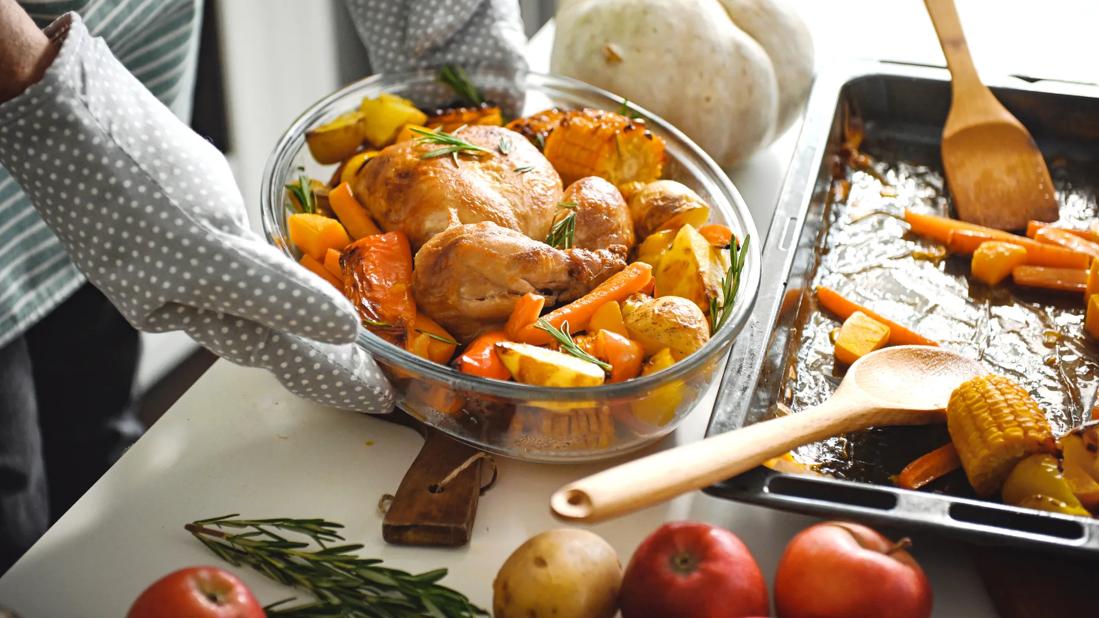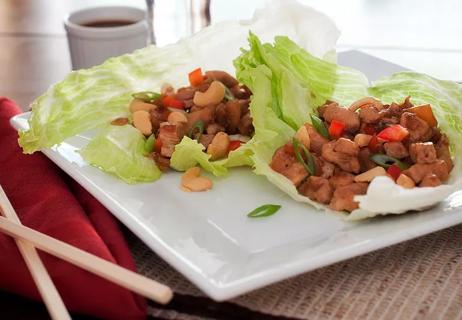You have plenty of options to fill your belly, but caution is required when preparing meals

Gluten is a stretchy and sticky protein that allows bread and other grain-based products to take their shape. It’s also a worrisome food ingredient that millions of people look to avoid.
Advertisement
Cleveland Clinic is a non-profit academic medical center. Advertising on our site helps support our mission. We do not endorse non-Cleveland Clinic products or services. Policy
So, what determines if you should adopt a gluten-free diet? And how should you go about doing it? Let’s get some answers from gastroenterologist Claire Jansson-Knodell, MD, and registered dietitian Anna Taylor, RDN, LD.
A gluten-free diet eliminates all food containing gluten, which is found in grains, like wheat, rye, barley and triticale. It’s recommended for people with a few very specific health conditions.
Following this restricted plan can be difficult, given how common gluten is in so many foods. (More on that in a moment.)
“Gluten is in a lot of food, where you really wouldn’t expect to find it,” says Dr. Jansson-Knodell. “To achieve a gluten-free diet, you really have to learn how to read nutrition labels. It can be challenging.”
But it’s also doable.
“A gluten-free diet definitely takes some adjusting to, but it isn’t a sentence to a life without bread, pasta or other foods you love,” adds Taylor. “It’s possible to follow a gluten-free diet and still enjoy many of your favorite foods. It just requires some extra effort and care.”
It’s recommended that you follow a gluten-free diet if you have:
Advertisement
If you have a wheat allergy, it’s important to avoid wheat in its various forms — but that doesn’t mean you have to avoid other grains that contain gluten, says Taylor. A wheat-free diet would be less restrictive than a completely gluten-free eating plan.
So, what can you eat on a gluten-free diet? Plenty, as it turns out, says Taylor. You can largely avoid gluten while filling your plate with:
Are there things you enjoy eating that are missing from that list? Pizza or pasta, for instance? Or freshly baked bread? In those instances, you can often find specialty gluten-free items to satisfy your tastes.
Any packaged product marketed as “gluten-free,” “without gluten,” “free of gluten” or “no gluten” must contain less than 20 parts per million of gluten — the lowest detectable level in foods — according to the U.S. Food and Drug Administration (FDA)’s safety standards.
“Thanks to the many gluten-free products and recipes readily available today, it’s possible to follow a gluten-free diet and still enjoy many of your favorite foods,” says Taylor.
Grain doesn’t equal gluten, clarifies Taylor. There are plenty of gluten-free grain (or grain-like) options, including:
Oats are naturally gluten-free, but they’re often grown, processed or stored near wheat — which brings a risk of gluten cross-contamination, warns Taylor. Look for a certified gluten-free label when buying oats.
Wheat is the primary source of gluten in most diets, so dodging gluten begins with staying away from wheat-based products. That includes forms of wheat like bulger, semolina, couscous and farro.
But wheat also isn’t the only grain with gluten. Barley, rye and triticale are among other grains to avoid.
Those grains are often ingredients in common foods, such as:
Advertisement
You might be surprised at how many unexpected foods contain gluten, too, says Taylor. It may show up in:
As mentioned, carefully reading nutrition labels and ingredient lists to check for gluten sources is critically important. Don’t assume a product is gluten-free without checking the label to verify it’s safe for you to eat.
Gluten can appear in products other than food, too, cautions Dr. Jansson-Knodell. Examples include:
Feeling overwhelmed after all of that? It’s understandable. There’s a lot to take in.
But know that you’re not alone in figuring things out. Talk to your healthcare provider or seek out a dietitian who can help you navigate a gluten-free diet and develop meal plans that meet all your nutritional needs.
“For celiac disease, the food is the medicine,” states Taylor. “Currently, the only treatment for celiac disease is a gluten-free diet — and when done right, it’s an incredibly effective treatment. Just take it one day at a time and one food at a time.”
Advertisement
Advertisement
Learn more about our editorial process.
Advertisement

Pay close attention when you’re grocery shopping, setting up your kitchen and dining out

The protein lurks in ingredients like oats, chips, beer and processed lunch meat

An easy check for all of the items in your shopping cart

Questions and answers about eating a gluten-free diet

This color additive, found in many pre-packaged foods, may affect people with ADHD or allergies

Eating too much salt can put extra pressure on your blood vessels and heart

Tart cherry juice contains natural compounds that may support better sleep

This fruit has clear nutritional benefits — but there’s little evidence it can prevent or treat illness

The ‘sunshine vitamin’ is found naturally in some fish and is added to other foods

Autism and ADHD often go hand in hand, giving rise to the term AuDHD

The Yuzpe regimen is less effective than other forms of emergency contraceptives, and it’s associated with more side effects